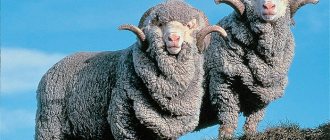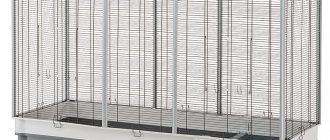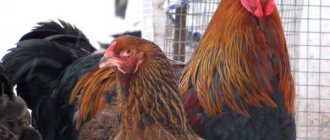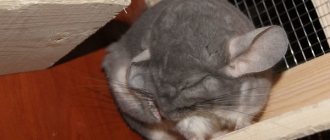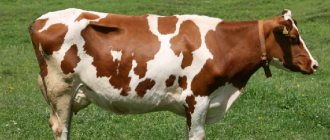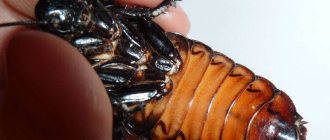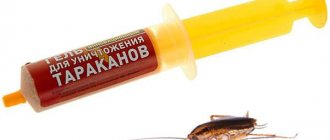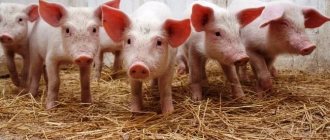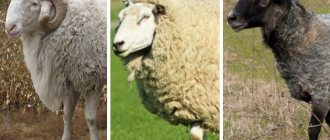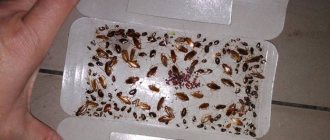The natural habitat of chinchillas is the highlands of the Andes, Peru, Bolivia, and Argentina. Because of their valuable fur, they became the target of constant hunting, which significantly reduced their numbers. For this reason, they were included in the International Red Book. However, this does not prevent you from turning chinchilla breeding into a successful business.
These fluffies are raised for fur in many countries. But in our country this type of activity has not yet gained wide popularity, which, in turn, provides little competition. This article will tell you how to start a business raising chinchillas.
Who are chinchillas?
Chinchillas are large rodents with valuable fur that naturally live in South America in high desert areas. They have large round ears, black eyes and long mustaches. The animals are nocturnal and feed on grass and insects.
As a result of mass catching, the chinchilla population has declined catastrophically, and they are listed in the Red Book. Long-tailed chinchillas, about half a meter long (including the tail), are bred under artificial conditions.
Chinchilla fur is usually gray-blue in color, very thick and dense. It protects the animals’ bodies from hypothermia at an altitude of 4-5 km above sea level, and is not afraid of any parasites. Chinchillas do not sweat or smell; to clean their fur, they bathe in sand and dust.
Life expectancy in captivity is up to 20 years. Adults weigh 600–800 grams, newborn cubs weigh 30–70 grams. Young females give birth to 1-2 cubs; with age, the litter increases to 5-6 babies.
The name Chinchilla comes from the Peruvian province of Chincha.
Industrial value
Chinchillas have been bred for fur, meat and offspring since the beginning of the 20th century, when Americans, with the permission of the Chilean government, took several specimens to California and adapted them to life in different climatic conditions.
Fur products are very expensive due to the unique characteristics and small size of the skins - about a hundred pieces are required to make one fur coat. The cost of chinchilla clothing is tens of thousands of dollars. In Europe, the chinchilla business is already well developed and almost all production is carried out for sale at the Copenhagen Fur Auction.
Chinchilla meat is used as a dietary food for tuberculosis, sclerosis and cancer. It is readily purchased by restaurants specializing in exotic cuisine.
Chinchillas are kept as pets in the same way as hamsters or guinea pigs. They are unpretentious, very pleasant to the touch, and have a pronounced character.
You can start a chinchilla breeding business with a few individuals and gradually increase the volume. The animals do not require special care, do not take up much space, do not scream or stink, so it is quite possible to create a mini-farm at home.
You can download a free chinchilla breeding business plan here.
Why does this idea have a future?
Owners of fur farms have long appreciated all the benefits of growing chinchillas.
Let's name the main advantages of the business:
- Relatively little competition in Russia.
- Constant growth in demand for products.
- High profitability and quick payback.
- The opportunity to start practically from scratch, while spending a minimum of effort and money.
- Year-round production.
The number of fluffy ones increases relatively slowly - about 6 babies per female per year. The reproductive age is about 10 years, but if we take into account culling and loss due to natural causes, the net increase is small.
Based on the above, even according to the most optimistic estimates, it will take our country more than 40 years to achieve the world average for fur sales. This means that there will not be overproduction on the Russian fur market for a long time. That is, the chinchilla breeding business will definitely be in trend for another 10-20 years.
Paradox! One of the main reasons for the high profitability of such a business is the slow reproduction of animals.
Breeding technology
In nature, chinchillas feel normal at temperatures up to +40°C, but for comfortable keeping in captivity you need to create the following conditions for them:
- humidity about 50%;
- temperature from +18°С to +20°С;
- room lighting at the rate of 60 W per 10 sq. m.;
- lack of direct sunlight;
- absence of drafts;
- clean water for drinking;
- sand bath for bathing;
- daily cleaning;
- weekly change of bedding in the cage;
- monthly sand change;
- disinfection of the premises once every 6 months.
On an area of 1 sq. m. can accommodate up to 3 individuals. Usually there is 1 male for 1 female, but it is also possible to form a family of 1 male and several females. Chinchillas begin to reproduce at the age of 7 months; they produce 2-3 litters per year, 1-2 cubs in each.
For example, a population of 2 males and 10 females can increase to 70 individuals after 12 months. The gender split is approximately equal. All the healthiest and most beautiful females remain on the farm for breeding. The best specimens are also selected from males, but in much smaller quantities. The remaining animals are sold to pet stores. With age, the litter of females increases to 5-6 individuals, and the herd grows faster.
Thus, in a couple of years, the animals will multiply to 300-350 individuals, and then you can start selling fur and meat.
Breeding chinchillas as a business at home: advantages and disadvantages
Chinchillas are small rodents with unusually lush, thick and beautiful fur.
From each hair follicle of an animal, not one villus grows, but several soft web-like hairs at once. This wool structure makes it surprisingly dense, warm and absolutely waterproof. Animal skins belong to the highest category according to the classification of furriers. There are many advantages to breeding chinchillas at home, which attracts beginners to this business:
- the animals are very unpretentious and do not need spacious premises;
- Even people who have no skills in fur farming can breed chinchillas;
- chinchillas eat plant food, which can significantly reduce costs;
- There is virtually no unpleasant odor on the fur farm due to the plant-based diet of the animals;
- high-quality skins are expensive;
- chinchillas do not shed, their skins are in excellent condition all year round;
- Chinchillas can be bred as pets and are in great fashion today.
Despite the large number of advantages, there are also difficulties in the business of breeding chinchillas at home that must be taken into account before starting the project:
- the animals are not fertile enough, the female brings no more than 9 cubs per year;
- females retain the ability to reproduce for up to 10 years, then they are culled.
Raising sheep at home for beginners: a business plan with calculations of costs and income in rubles, as well as step-by-step instructions for organizing your own farm, are contained in the article at the link.
How to create your own chinchilla breeding business?
How to organize a business correctly?
Experienced fur breeders recommend starting with 1 family (4 females and 1 male). Having made sure that managing the animals is not difficult, you can think about organizing a larger fur farm according to all the rules.
Select a room for keeping animals. Chinchillas love dry and fairly warm rooms without drafts. You can place the cages in a warm barn, an outbuilding, or the basement of a house. For 20 families you need no more than 2 square meters. m area. The cages are installed in tiers at a height convenient for care.
The ease of caring for chinchillas at home does not require hired labor. One person can easily handle 500 animals. As the number of chinchillas increases, you can involve your family members in caring for them.
Register as an individual entrepreneur and choose a simplified form of tax payment. For the smooth sale of animals, you will need a certificate from the veterinary inspection. Purchase cages and care equipment .
Ideal cages for keeping chinchillas at home are 60 cm long, 50 cm high and wide. Each animal should have its own individual room.
The cages are equipped with drinkers and feeders and are installed in tiers to make it easy to care for the animals. For reliability, the cages are attached to the wall.
Chinchillas intended for breeding are purchased from various nurseries. It is important that animals are not closely related, as this weakens the offspring. For 4 females you need 1 male; it is not advisable to split families. In the future, you will have to change manufacturers from time to time to avoid inbreeding.
Quail breeding as a business: reviews from novice entrepreneurs, as well as step-by-step instructions, are contained in our new article at the link.
How and where to keep chinchillas at home?
Equipment
Chinchillas are kept indoors in iron mesh cages 40-45 cm high. On the front wall there is a door, feeders and drinkers. A shelf for resting is attached to the back in the middle; the bottom is lined with pine sawdust. The cages are placed one on top of the other in several tiers and several rows in such a way that animals raised for different purposes are located separately:
- For fur, meat or tribe.
- Increase in livestock.
In addition to cells, you also need to purchase:
- feeders;
- drinking bowls;
- baths for bathing;
- pallets for sawdust;
- heater;
- air conditioner.
All equipment that comes into contact with chinchillas should not be made of wood, since these animals are rodents with very sharp front incisors. The exception is the breeding period, when a box for the young is placed in the cage.
Acquisition
The most important part of the business plan is the acquisition of the first animals. For a novice entrepreneur, it will be enough to purchase 10 females and 2 males. This will save costs on starting the project and will allow you to understand the nuances of chinchilla breeding without significant risk.
Healthy purebred specimens of popular coloring cost 6,000 rubles. – 9,000 rub. There are a dozen basic colors of chinchillas:
- White Wilson - very light fur all over the skin and black eyes.
- White velvet - the gray muzzle and paws stand out against a white background.
- White-pink is a slightly darker color than Wilson's White, with pink eyes.
- Beige - has several varieties, from dark to light, with pale eyes.
- Sapphire - light fur with a soft blue tint. This coloration is very difficult to obtain, and the animals subsequently require increased care.
- Purple is the main color closer to gray, with a slight tint.
- The standard color is the natural appearance of chinchillas: dark ash back and light belly.
- Black velvet (corduroy) - black top with a smooth transition to a light bottom, beige nose and black eyes.
- Ebony - varies from dark gray to completely black.
In addition, there are various shades obtained by combining basic ones or as a result of mutations. The most popular are chinchillas with standard coloring or black and velvet.
When choosing adult animals (7-8 months old), you need to pay attention to the following points:
- correct rounded head shape;
- short rounded ears;
- there is practically no neck;
- smooth back without visible thickenings;
- dense and elastic fur, thick over the entire surface of the body;
- weight approximately 600 grams;
- healthy, beautiful producers.
It is best to purchase chinchillas from farms that have been breeding animals for a long time. In a serious farm, management will provide a veterinary certificate and advise on maintenance and care.
Chinchillas naturally have strong immunity and do not need to be vaccinated.
Nutrition
Chinchillas are fed once a day in the evening, as they are nocturnal. The basis of the diet is balanced granulated food. Additionally, herbs are introduced - fresh and dried, apples, carrots. To maintain immunity and compensate for the lack of fresh air, it is necessary to give vitamin complexes weekly.
An adult animal eats about 50 g of food per day. However, it is necessary to take into account the rather large difference in the weight of animals depending on gender, species and age. Therefore, it is necessary to adjust the dosage for specific individuals.
Particular attention should be paid to the nutrition of pregnant females and young animals. For the first one and a half to two months, the cubs are fed with milk, then they are removed from the mother into a separate cage and given regular food. It is extremely undesirable to change anything in the diet of females and young individuals, as they react sharply to new foods.
Content
This is a heat-loving animal that lives in the dry climate of the highlands of South America, so the easiest way growing chinchillas
- temperature range from +18 to +20 degrees;
- humidity level 50%;
- protection from direct sunlight;
- low illumination of the cage space.
They eat grass and insects once a day in the evening. For proper maintenance, they only need to create the proper conditions once and feed and change the water once a day.
You will also need to clean the cage every day. Cleaning the cells will not cause discomfort and require much effort. The animals do not smell; the sand in which they bathe needs to be changed once a month. The bedding is changed once a week.
A family of one male and one female can live on one square meter. Also, at the first stage, you can create a family of two females and one male.
The animals are fed balanced granular food, which is sold in pet stores, as well as carrots, apples, fresh or dried herbs. When living in apartments, you need to regularly give vitamin complexes to support the immune system.
Mini-farm registration
At the initial stage, there is no need to officially register a chinchilla business, since it will take about six months to raise the first litter, from which several individuals can be sold.
Before implementation, you need to choose one of the registration options:
- Individual entrepreneur. Suitable for a single business owner.
- Farming. Relatives can participate in the enterprise, but for this it is necessary to draw up an agreement.
To pay taxes, it is most profitable to choose a single agricultural tax at a rate of 6% of profit.
No license or other permits are required to raise chinchillas. It is necessary to register with the veterinary service.
Sales organization
The mini-farm begins to receive income from the very first offspring of purchased breeding animals. Individuals that are unsuitable for breeding or have poor quality fur are sold through pet stores or markets to be kept as pets.
Animals that meet all standards remain on the farm for breeding or are sold to other farms. The cost of breeding chinchillas is much higher than culled ones.
To sell chinchillas for fur, you need to have 400-500 individuals in stock. The skins are harvested mainly from male animals. Consumers are fur factories and studios in large cities. The cost of high-quality skins can reach 10,000 rubles.
Chinchilla meat is purchased by restaurants as an exotic and dietary product.
With high production volumes, it is advisable to open your own workshop for sewing fur products.
Until there are enough positive reviews about the farm, you can promote your chinchilla business using conventional advertising means:
- advertise in the press and on the Internet;
- place business cards and brochures in pet stores in the city;
- join a specialized online community, invite those interested on excursions;
- create a website;
- take part in zoo exhibitions.
Financial plan
The business plan should include the following expense items (in rubles):
- purchase of animals – 150,000;
- purchase of equipment – 150,000;
- advertising – 10,000;
- other expenses – 30,000;
- premises (it is better to rent a separate one, since animals are noisy and keeping them in their own apartment is not always the best option) – 50,000.
See on the same topic: Business plan for opening a stationery store
Total: 390 thousand rubles.
Payback period – from 2 years.
Financial calculations
To start a chinchilla farm and determine whether running a business at home is profitable or not, you need to plan initial and subsequent costs. The cost of renting the premises is excluded from the calculation; only minor repairs will be required. Calculations are made for keeping chinchillas on an industrial scale - per 100 individuals.
Start-up capital:
| № | expenditures | Amount, rub. |
| 1 | Indoor renovation | 10 000 |
| 2 | Purchase of equipment and consumables | 220 000 |
| 3 | Purchasing breeding specimens at wholesale prices | 300 000 |
| 4 | Purchase of food and supplements for 1 month | 10 000 |
| 5 | Business registration | 1 000 |
| 6 | 10 000 | |
| 7 | Other | 20 000 |
| Total | 571 000 | |
Fixed monthly costs for maintaining animals are:
| № | expenditures | Amount, rub. |
| 1 | Utility bills (mainly electricity) | 8 000 |
| 2 | Purchase of feed and additives | 10 000 |
| 3 | Veterinarian services | 20 000 |
| 4 | Tax payments | 6 000 |
| 5 | Additional expenses | 10 000 |
| Total | 54 000 | |
Breeding chinchillas as a business at home, judging by reviews, brings up to 500% profit. Despite the fact that the most valuable thing in animals is fur, the main income comes from the sale of live animals for personal use or breeding.
The annual revenue of a mini-farm can be calculated based on the expected sale of 300 bred individuals:
| № | Type of income | Qty | price, rub. | Amount, rub. |
| 1 | Breeding chinchillas | 100 | 9 000 | 900 000 |
| 2 | Culled chinchillas | 100 | 3 000 | 300 000 |
| 3 | Chinchillas for fur | 100 | 6 000 | 600 000 |
| Total | 1 800 000 | |||
Profit for the first year of operation will be: RUB 1,800,000. — 54,000 rub. x 12 months — 571,000 rub. = 581,000 rub. In the future - 1,152,000 rubles.
With good care, chinchillas retain the ability to reproduce for up to 15 years. Therefore, this type of business is one of the most stable, long-term and profitable.
Video: chinchilla breeding as a business – profitable or not?
Let's calculate my income
In total, I spent 800,000 rubles on opening and developing the business. I have been in my business for 10 years and have fully returned the money.
I have been receiving an income of 2,650,000 per year for 10 years. That is, I have already earned 26,500,000 rubles on my farm. From this money we subtract the funds spent in the amount of 1,000,000 rubles. The result is an exhaust amount of 25,500,000 rubles.
As I said, having worked on my farm for 10 years, I have never regretted it and I am very happy with my earnings. I'm thinking about increasing the price of puppies to 4,000 per puppy. Chinchillas have different prices in different areas; you can sell them where they are more expensive. The price for three-month-old chinchillas ranges from 3,000 to 5,000 rubles. You just need to find a place to sell and make a good profit.

